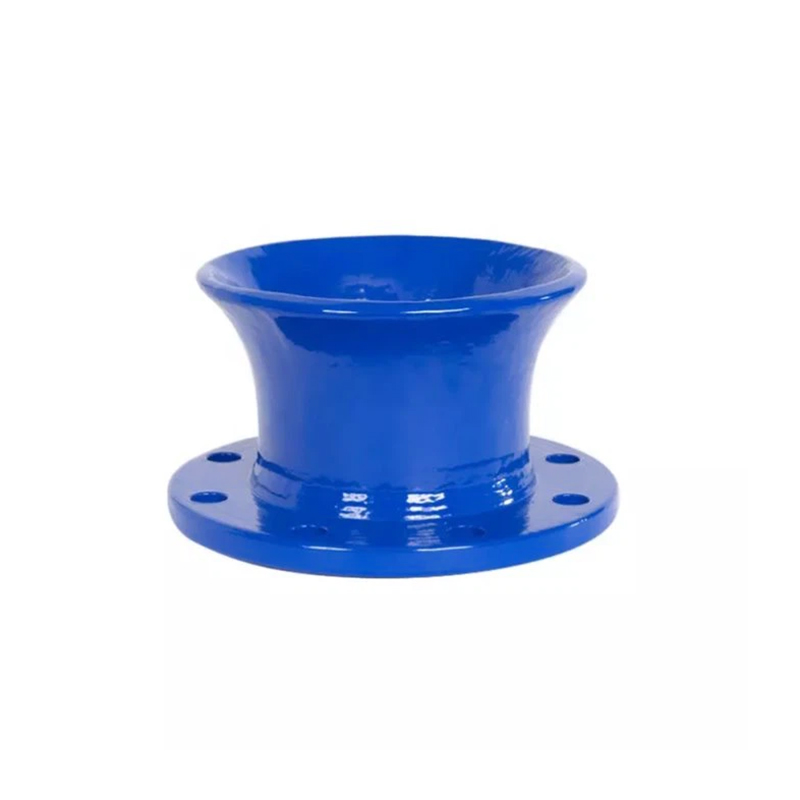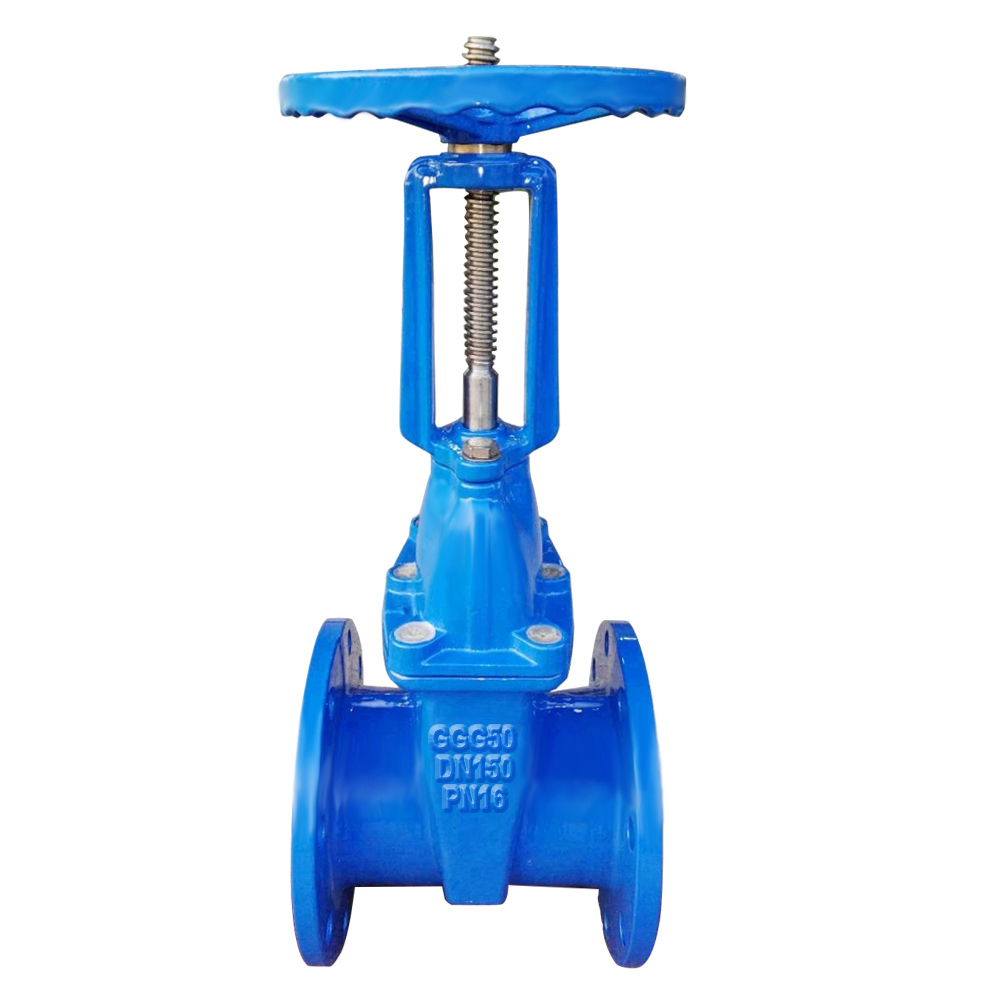- Size Range: DN50-DN2000 (2″ – 80″), available with PN10, PN16, PN25 and PN40 flanges
- Standards: ISO2531, ISO4179, ISO8179, BS EN 545, BS EN598, BS4772, ISO7005-2, EN1092-2:1997, DIN2501, GBT13295
- Flange Drilling: PN10, PN16 or PN25 in accordance with ISO 7005-2/EN 1092-2
- Temperature Range: 0°C – 50°C, excluding frost
- End Connections: Spigot, socket or flanged
- Internal Lining: Cement mortar per ISO4179 or bitumen coating (min. 70 microns) or fusion bonded epoxy
- External Coating: Zinc coating (min. 150g/m2) per ISO8179 + bitumen (min. 70 microns) or epoxy or per customer requirement
- Product Range: Dismantling joints, flange adapters, couplings, loose flange joints, fittings, saddles, clamps, quick flange adapters, gibault joints, restrained joints/flanges, valves, etc.
- Materials: Ductile iron grade 500-7/450-12 per ISO 1083 for body and retainer; EPDM/NBR for seal ring; Zinc plated or galvanized steel for stub ends
- Ductile iron construction provides strength and durability
- Flanged ends allow easy installation and connection to other flanged components
- Cement mortar lining prevents corrosion and provides smooth flow
- Zinc coating protects against corrosion and prolongs service life
- Variety of sizes and pressure ratings for different applications
- Compact 90 degree elbow design saves space compared to using multiple fittings
- Flanges allow easy disassembly for maintenance and inspection
- Suitable for water, wastewater, irrigation and other liquid transfer pipelines
- Meets international standards for quality and performance
| Specification | Details |
|---|---|
| Material | Ductile iron |
| Standards | EN545, EN598, ISO2531, ANSI/AWWA, etc |
| Size Range | DN50-DN2600mm |
| Colors | Blue, Black, Red, etc |
| Joint Type | Flange type |
| Pressure Ratings | PN10, PN16, PN25, PN40 |
| OEM | Acceptable |
| Fitting Types | Socket bend, Flanged bend, Socket and Flanged Tee, Flanged socket, Socket taper, blank flanges, Flanged adaptor, coupling, dismantling joints, fittings for PVC pipes, other accessories |
| Surface Treatment | Fusion bonded epoxy coating, Cement lining inside & zinc/bitumen coating outside, Zinc+bitumen inside and outside, Customized |
| Inspection | Foundry in-house, Third party upon request |
| Applications | Stormwater, Wastewater, Irrigation systems |
| Advantages | Customized high quality fittings |
| Packaging | Standard wooden pallets or cases |
Introduction to Bell Mouth
A bell mouth is a specially designed intake or exhaust fitting used in piping systems to optimize the flow of air, gas, or liquids. Its distinctive flared shape reduces turbulence and allows for smoother airflow, making it a common choice in industries requiring efficient fluid or gas distribution, such as automotive, HVAC, and fluid mechanics. The bell mouth is essential in minimizing pressure drop and enhancing system performance by providing a streamlined entry or exit point for the flow.
Benefits of Bell Mouth Design
The bell mouth design features a wide, curved opening that allows fluid or air to enter or exit a system with minimal resistance. This smooth transition reduces turbulence and drag, resulting in a more efficient flow. By preventing sudden changes in direction or speed, the bell mouth decreases the risk of flow disruptions that could otherwise lead to inefficiencies or mechanical wear.
- Reduced Pressure Drop: The wide opening and gradual curve of the bell mouth ensure a controlled flow, reducing the amount of pressure lost as the fluid or gas moves through the system.
- Improved Flow Efficiency: The flared design allows for better control over the velocity of the fluid or air, promoting smoother, uninterrupted movement.
- Decreased Wear and Tear: By minimizing turbulence, the bell mouth helps reduce mechanical stress on system components, increasing their longevity.
Material and Durability
The bell mouth is typically made from materials such as stainless steel, aluminum, or cast iron, depending on the application. Stainless steel is known for its corrosion resistance, making it suitable for harsh environments, while aluminum is lightweight and often used in automotive and HVAC systems where weight is a concern. Cast iron provides excellent durability in high-stress industrial applications, ensuring long-term performance even under demanding conditions.
Applications of Bell Mouth
- HVAC Systems: In heating, ventilation, and air conditioning systems, the bell mouth is used at the intake or exhaust points to ensure smooth airflow with minimal pressure drop, leading to energy-efficient performance.
- Automotive Industry: Bell mouths are often used in engine air intakes to increase airflow efficiency, reduce pressure drop, and optimize engine performance, especially in racing and high-performance vehicles.
- Industrial Piping: In systems where fluids or gases must move efficiently through pipelines, the bell mouth is essential in reducing turbulence and maintaining a steady flow, particularly in pressure-sensitive applications.
Enhancing Performance with Bell Mouth
The bell mouth is specifically designed to enhance flow performance by reducing the velocity stack effect, where fluid speed increases rapidly as it enters a narrower pipe. The gradual expansion provided by the bell mouth allows for a controlled increase in velocity without creating excessive turbulence, making it an ideal solution in scenarios where high efficiency is required.
Conclusion
The bell mouth is a vital component in improving flow efficiency and reducing pressure drop in a wide range of applications. Whether for HVAC systems, automotive performance, or industrial piping, its design ensures long-lasting reliability and optimal performance. To explore Jhy Group’s full range of products, including the bell mouth, visit our catalog or download our product line to find the perfect fit for your needs.





















































